21 Oct What is a hamstring strain?
You often hear of people “doing their hammy”, but what actually is an injured hamstring? The hamstrings are a group of three muscles on the back of the thigh. These muscles are known as:
- Semitendinosus
- Semimembranosus
- Biceps femoris
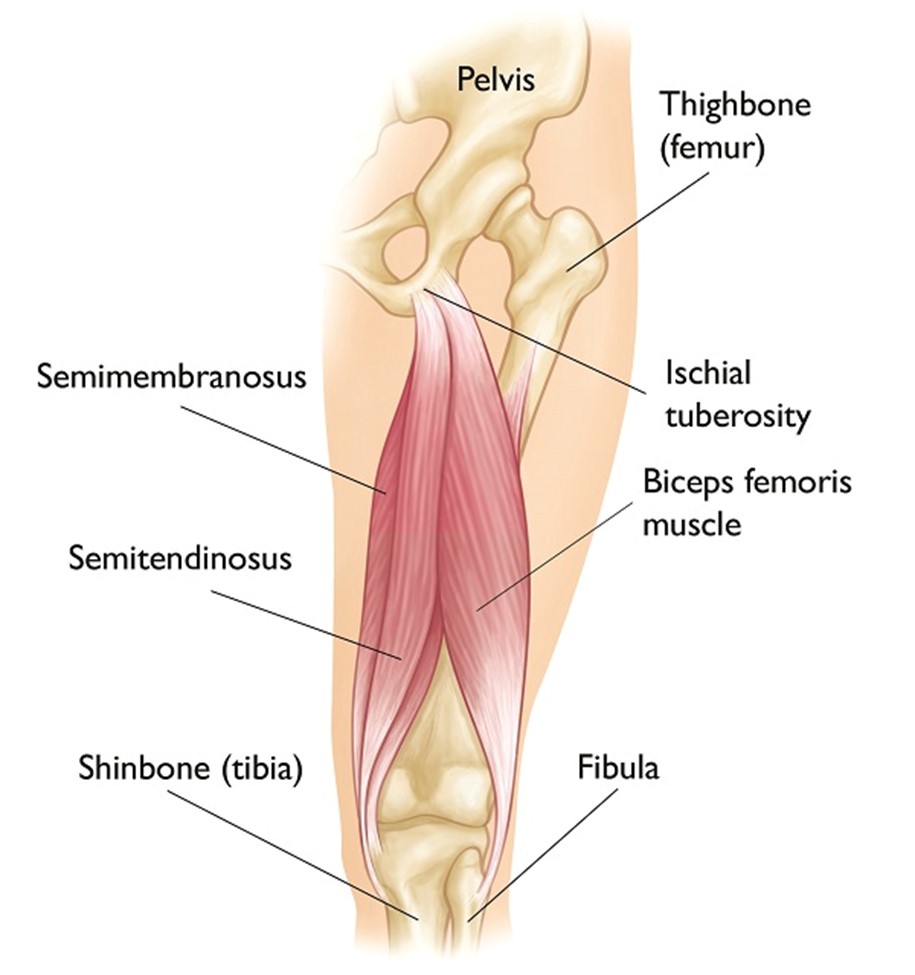
Each of these muscles is made up of lots of small muscle fibres, which can be seen in the Figure below. These muscle fibres allow the hamstring to contract, which is important for activities such as running, walking and kicking.
A hamstring ‘strain’ occurs when the demand on the muscle fibres exceeds its capacity, which results in disruption of the muscle fibres.
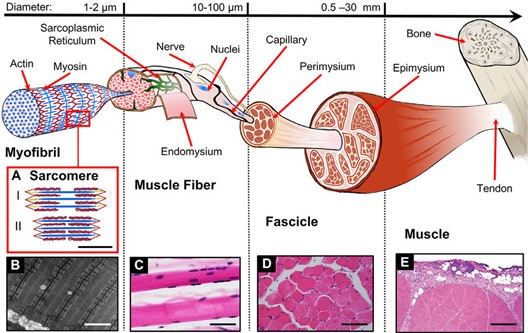
Reproduced from The Myotendinous Junction—A Vulnerable Companion in Sports. A Narrative Review 2021, Frontiers in Physiology.
How does a hamstring strain happen?
Hamstring strains can occur whenever the demand on the hamstring is higher than it can tolerate. This is often when the hamstring is contracting hard and/or being stretched.
Approximately 73% of hamstring injuries among elite Australian footballers (AFL) could are caused by high-speed running or sprinting Gabbe et al (2006).
Other mechanisms that can cause hamstring strain include kicking, overstretching the hamstring and twisting.
Classifications
Hamstring strains can be described and classified in different ways.
These include:
1. Which of the three hamstring muscles is injured
As we discussed earlier, the “hamstrings” is actually a group of three muscles on the back of the thigh. Which of the three muscles is injured, makes a difference in how long the hamstring will take to recover, as well as the best rehab for the injury.
The table below shows the frequency that each hamstring muscle is injured when someone experiences a ‘hamstring strain’.
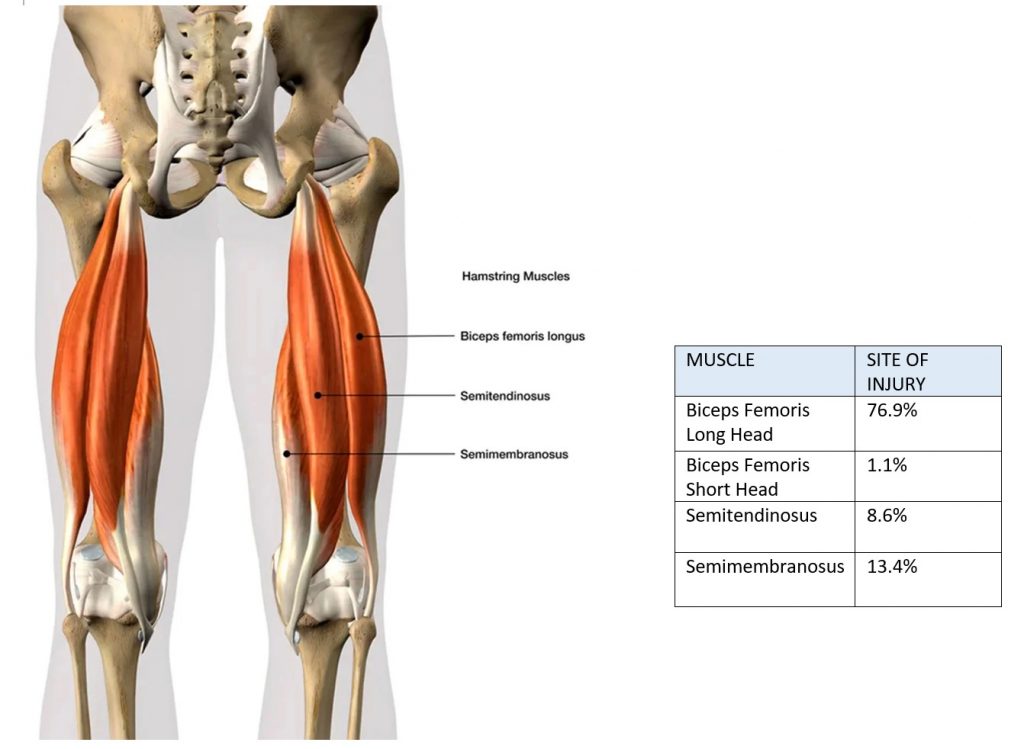
This data is taken from Grange et al. (2022) work in 2022, where they looked at over 2000 MRI’s of hamstring strains.
It is interesting to note that 25% of hamstring strains occurred in more than one the hamstring muscles.
In general, injuries to the semitendinosus and semimembranosus have shorter return to play times compared to injuries of the biceps femoris. As each of the hamstring muscles have different function, knowing which muscle injured can be very helpful in tailoring an athlete’s rehab program.
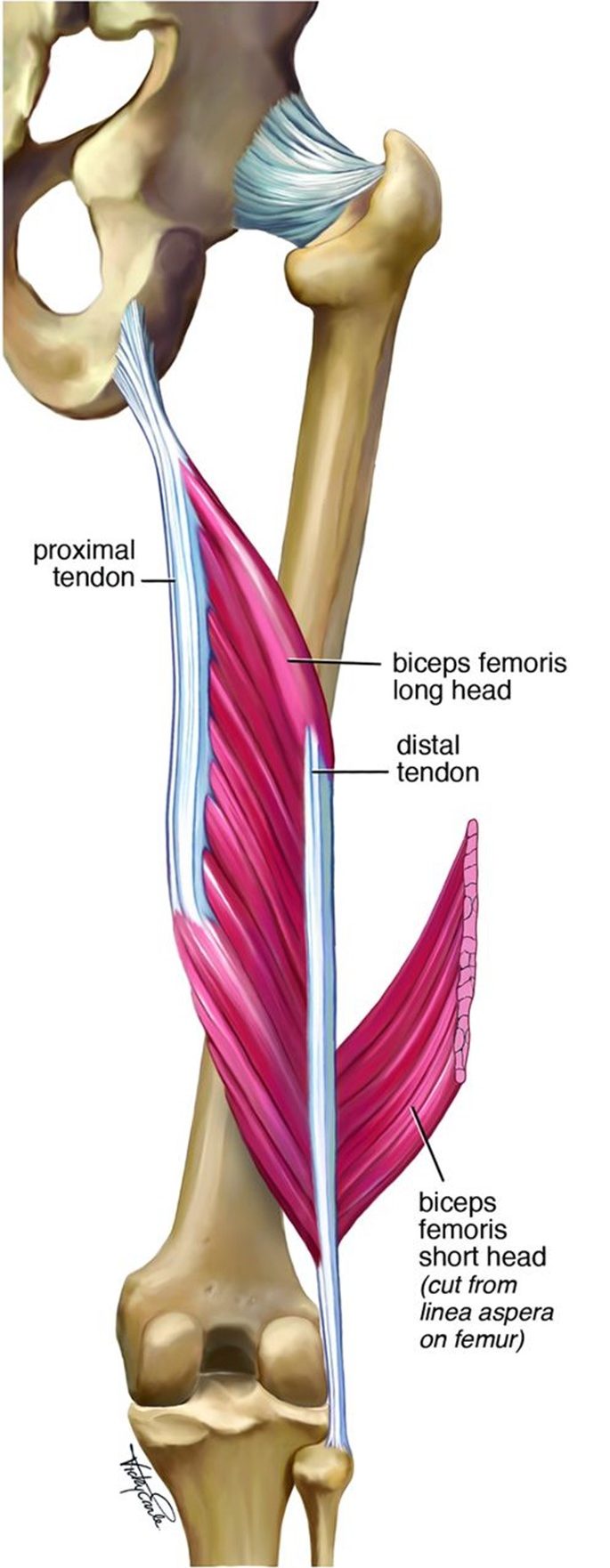
2. The Location within the muscle itself
While which of the hamstrings muscle that is injured is important in planning rehab, so too is where within the muscle that the injury has occurred.
The diagram on the right shows the Biceps Femoris, one of the hamstring muscles.
The white coloured sections are the tendons, which are rubbery structures which connect muscle to bone. The red fibres are the muscle tissue.
Some hamstring injuries involve the tendon itself. The tendon can be separated into the ‘free tendon’ shown in green, as well as the “central tendon” shown in green. The central tendon is the part of the tendon which runs through the muscle belly, and has muscle attached to it. The ‘central tendon’ is also known as the intramuscular tendon – these terms are used interchangeably.
The majority of hamstring strains (around 52%) occur at the junction between the muscle fibres and the tendon. This area is known at the ‘myotendinous junction’, which is often abbreviated to the ‘MTJ’.
Most research shows that injuries that involve the central tendon take longer to return to sport. These injuries need careful considered rehab, especially with planning return to running.
There are even more nuanced within the hamstring. One area which is becoming more understood is the ‘T junction’ of the Biceps Femoris. This is a particular area along the Biceps Femoris tendon, which when injured, has a very high recurrence rate when not rehabilitated appropriately.
3. ‘Grading’ systems
Sometimes a grading system is used to define hamstring strains and muscle strains more generally.
There is a whole range of muscle classifications systems in use.
Traditionally, a grade I to grade III system was used. This was generally based on the athlete’s symptoms, with:
- Grade I being “mild strain”
- Grade II being a “moderate strain”
- Grade III being a “severe strain”
We mentioned earlier that the location of the injury within the muscle has been shown to influence prognosis and recovery. More recently, classification systems have been developed that try to incorporate this importance into the grading system. An example of this the British Athletics Muscle Injury Classification (Macdonald et al., 2019).
The British Athletic Classification System grades the injury based on the extent of the damage to the muscle fibres:
- Grade 1 (small)
- Grade 2 (moderate)
- Grade 3 (extensive)
- Grade 4 (full thickness)
The injury is then further divided into the location of the injury:
- Myofasicial
- Musculotendinous
- Tendinous
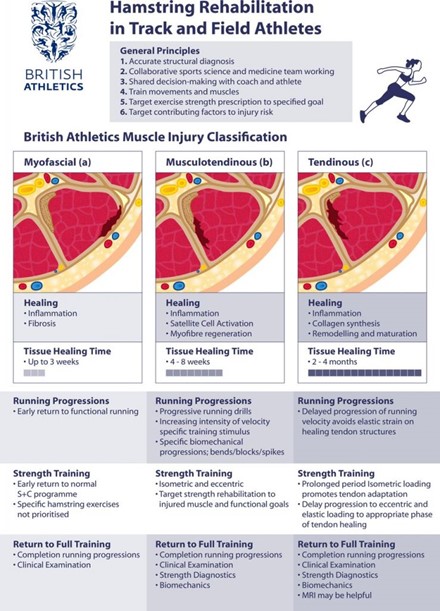
Conclusion
There are many different ways that we can classify hamstring injuries, and it can sometimes be confusing when many different systems are used. However, it is important to have a clear understanding of each athlete’s hamstring strain, as it plays an important role in planning an effective rehab plan and estimating return to play times.
References
Gabbe BJ, Bennell KL, Finch CF, Wajswelner H, Orchard JW. Predictors of hamstring injury at the elite level of Australian football. Scand J Med Sci Sport 16: 7-13, 2006.
Grange, S., Reurink, G., Nguyen, A. Q., Riviera-Navarro, C., Foschia, C., Croisille, P., & Edouard, P. (2022). Location of Hamstring Injuries Based on Magnetic Resonance Imaging: A Systematic Review. Sports Health, 19417381211071010. https://doi.org/10.1177/19417381211071010
Pollock N, James SL, Lee JC, Chakraverty R. British athletics muscle injury classification: a new grading system. (2014) British journal of sports medicine. 48 (18): 1347-51


